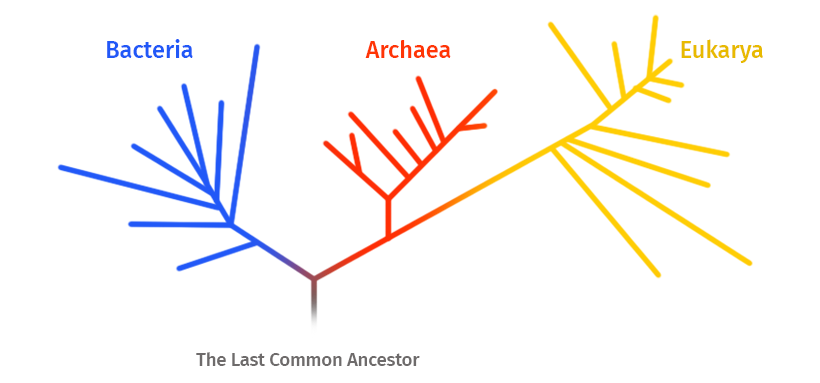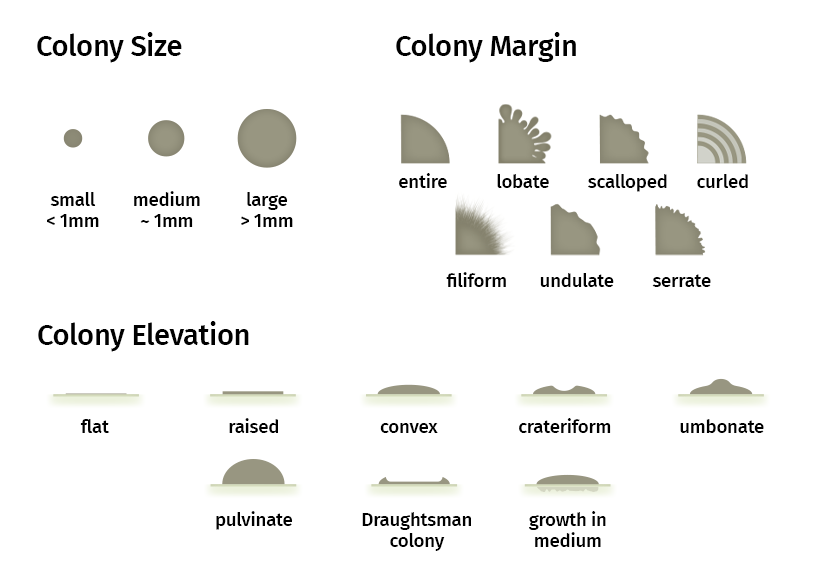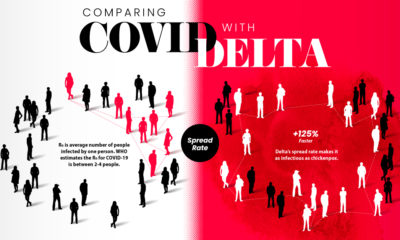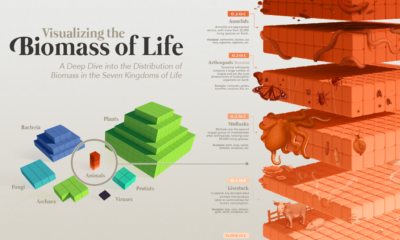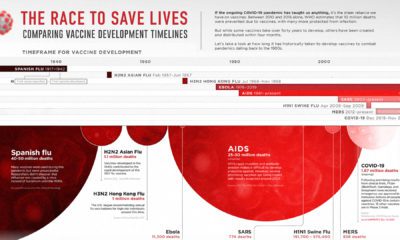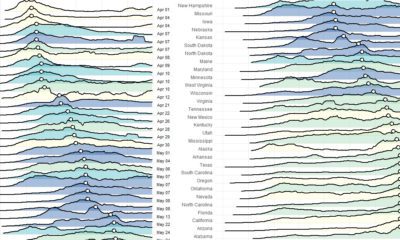They were the first form of life to appear on Earth almost 3.8 billion years ago. They make up the second most abundant lifeform, only outweighed by plants. And most interesting of all: they exist in practically every environment on our planet, including areas where no other lifeforms can survive. As a result, bacteria exhibit a wide variety of appearances, behaviors, and applications similar to the lifeforms we see in our everyday lives. The incredible diversity of bacteria goes underappreciated simply because they are invisible to the naked eye. Here, we illustrate how researchers classify these creatures on the basis of appearance, giving you a glimpse into this microscopic world.
A Life of Culture
Though bacteria may look similar to other microorganisms like fungi or plankton, they are entirely unique on a microscopic and genetic level. Bacteria make up one of the three main domains of life. All life shares its earliest ancestor with this group of microbes, alongside two other domains: the Archaea and the Eukarya.
Archaea are very similar to bacteria, but have different contents making up their cell walls. Eukarya largely consists of complex, multicellular life, like fungi, plants, and animals. Bacteria are similar to its single-celled members because all bacteria are also unicellular. However, while all Eukarya have nuclear membranes that store genetic material, bacteria do not. Bacteria have their genetic material free-floating within their cellular bodies. This impacts how their genes are encoded, how proteins are synthesized, and how they reproduce. For example, bacteria do not reproduce sexually. Instead, they reproduce on their own. Bacteria undergo a process called binary fission, where any one cell divides into two identical cells, and so on. Fission occurs quickly. In minutes, populations can double rapidly, eventually forming a community of genetically identical microbes called a colony. Colonies can be visible to the human eye and can take on a variety of different shapes, textures, sizes, colors, and behaviors. You might be familiar with some of these:
Superstars of a Tiny World
The following are some interesting bacterial species, some of which you may be familiar with:
Epulopiscium spp
This species is unusually large, ranging from 200-700 micrometers in length. They are also incredible picky, living only within the guts of sturgeon, a type of large fish.
Deinococcus radiodurans
D. radiodurans is a coccus-shaped species that can withstand 1,500 times the dose of radiation that a human can.
Escherichia coli
Despite being known famously for poisoning food and agriculture spaces from time to time, not all E.coli species are dangerous.
Desulforudis audaxviator
Down in the depths of a South African gold mine, this species thrives without oxygen, sunlight, or friends—it is the only living species in its ecosystem. It survives eating minerals in the surrounding rock.
Helicobacter pylori
Known for causing stomach ulcers, this spiral-shaped species has also been associated with many cancers that impact the lymphoid tissue.
Planococcus halocryophillus
Most living things cease to survive in cold temperatures, but P. halocryophillus thrives in permafrost in the High Arctic where temperatures can drop below -25°C/-12°F.
‘Bact’ to the Future
Despite their microscopic size, the contributions bacteria make to our daily lives are enormous. Researchers everyday are using them to study new environments, create new drug therapies, and even build new materials. Scientists can profile the diversity of species living in a habitat by extracting DNA from an environmental sample. Known as metagenomics, this field of genetics commonly studies bacterial populations. In oxygen-free habitats, bacteria continuously find alternative sources of energy. Some have even evolved to eat plastic or metal that have been discarded in the ocean. The healthcare industry uses bacteria to help create antibiotics, vaccines, and other metabolic products. They also play a major role in a new line of self-building materials, which include “self-healing” concrete and “living bricks”. Those are just a few of the many examples in which bacteria impact our daily lives. Although they are invisible, without them, our world would undoubtedly look like a much different place. on Even while political regimes across these countries have changed over time, they’ve largely followed a few different types of governance. Today, every country can ultimately be classified into just nine broad forms of government systems. This map by Truman Du uses information from Wikipedia to map the government systems that rule the world today.
Countries By Type of Government
It’s important to note that this map charts government systems according to each country’s legal framework. Many countries have constitutions stating their de jure or legally recognized system of government, but their de facto or realized form of governance may be quite different. Here is a list of the stated government system of UN member states and observers as of January 2023: Let’s take a closer look at some of these systems.
Monarchies
Brought back into the spotlight after the death of Queen Elizabeth II of England in September 2022, this form of government has a single ruler. They carry titles from king and queen to sultan or emperor, and their government systems can be further divided into three modern types: constitutional, semi-constitutional, and absolute. A constitutional monarchy sees the monarch act as head of state within the parameters of a constitution, giving them little to no real power. For example, King Charles III is the head of 15 Commonwealth nations including Canada and Australia. However, each has their own head of government. On the other hand, a semi-constitutional monarchy lets the monarch or ruling royal family retain substantial political powers, as is the case in Jordan and Morocco. However, their monarchs still rule the country according to a democratic constitution and in concert with other institutions. Finally, an absolute monarchy is most like the monarchies of old, where the ruler has full power over governance, with modern examples including Saudi Arabia and Vatican City.
Republics
Unlike monarchies, the people hold the power in a republic government system, directly electing representatives to form government. Again, there are multiple types of modern republic governments: presidential, semi-presidential, and parliamentary. The presidential republic could be considered a direct progression from monarchies. This system has a strong and independent chief executive with extensive powers when it comes to domestic affairs and foreign policy. An example of this is the United States, where the President is both the head of state and the head of government. In a semi-presidential republic, the president is the head of state and has some executive powers that are independent of the legislature. However, the prime minister (or chancellor or equivalent title) is the head of government, responsible to the legislature along with the cabinet. Russia is a classic example of this type of government. The last type of republic system is parliamentary. In this system, the president is a figurehead, while the head of government holds real power and is validated by and accountable to the parliament. This type of system can be seen in Germany, Italy, and India and is akin to constitutional monarchies. It’s also important to point out that some parliamentary republic systems operate slightly differently. For example in South Africa, the president is both the head of state and government, but is elected directly by the legislature. This leaves them (and their ministries) potentially subject to parliamentary confidence.
One-Party State
Many of the systems above involve multiple political parties vying to rule and govern their respective countries. In a one-party state, also called a single-party state or single-party system, only one political party has the right to form government. All other political parties are either outlawed or only allowed limited participation in elections. In this system, a country’s head of state and head of government can be executive or ceremonial but political power is constitutionally linked to a single political movement. China is the most well-known example of this government system, with the General Secretary of the Communist Party of China ruling as the de facto leader since 1989.
Provisional
The final form of government is a provisional government formed as an interim or transitional government. In this system, an emergency governmental body is created to manage political transitions after the collapse of a government, or when a new state is formed. Often these evolve into fully constitutionalized systems, but sometimes they hold power for longer than expected. Some examples of countries that are considered provisional include Libya, Burkina Faso, and Chad.
